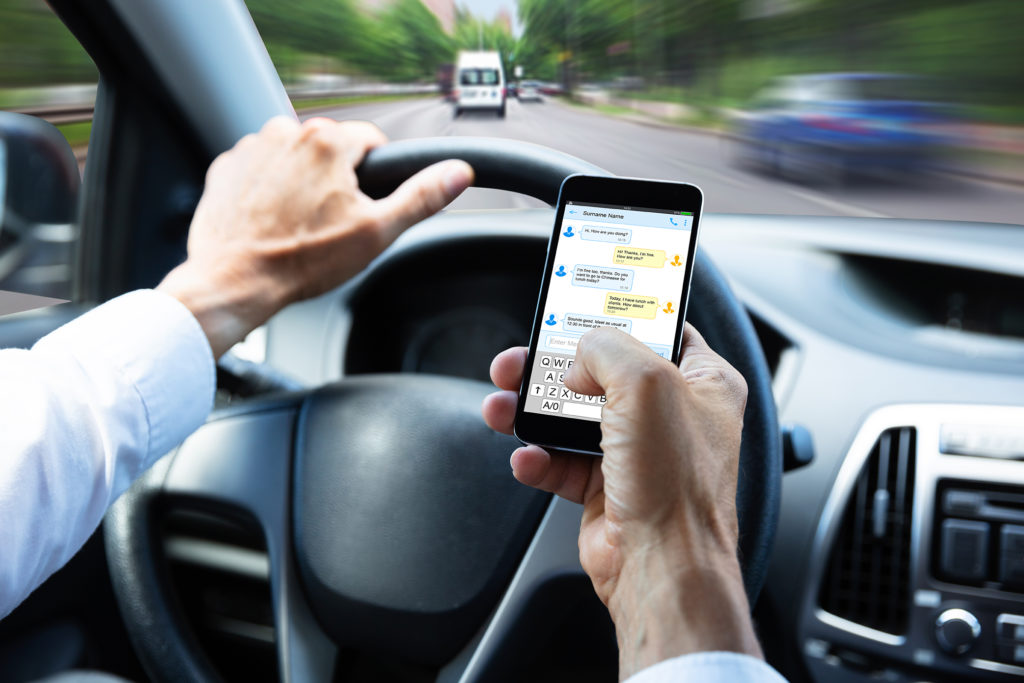Although public and employee safety is a high priority for most firms, it is especially critical for those with commercial fleets. After all, fleet managers are in charge of assuring driver safety as well as analysing fleet hazards. While many variables can contribute to motor accidents (for example, intoxicated driving, poor road conditions, and inclement weather), distracted driving is a common yet preventable cause of accidents.
A distracted driver is someone who is not paying attention behind the wheel. An object, activity, event, or person may be the source of this inattention. Distracted driving lowers attentiveness, decision-making, and performance, increasing the possibility of driver error. According to studies, many crashes and near-collisions are caused by driver inattention, which occurs as little as three seconds before the event.
It is critical for fleet insurance managers to put procedures in place to avoid distracted driving. If not managed properly, distracted driving can result in higher insurance premiums, lost productivity, reputational damage, and even driver injuries or deaths.
According to Department for Transport (DfT) data, distracted or impaired driving led to 17% of all car accidents in the United Kingdom in 2020. This figure is especially important for fleets because many commercial vehicles have worse driver visibility than personal vehicles and are far more difficult to manage or stop in an emergency.
As a result, fleet managers must address the issue of distracted driving. If not managed properly, it can result in higher insurance rates, costly car repairs, lower productivity, reputational damage, and even driver injuries or deaths. We highlight below common types of driver distractions as well as related preventative techniques to keep your fleet safe.
Types of Driver Distractions
It is critical to be aware of all potential driver distractions while adopting a fleet risk management programme.
Main types of driver distractions…
- Visual distractions – Anything that diverts a driver’s attention away from the road is considered a visual distraction (eg pedestrians, collisions or road signs).
- Physical distractions – Anything that leads a driver to take their hands off the wheel is considered a physical distraction (eg eating, drinking or tuning the radio).
- Cognitive distractions – Any distraction that causes a driver to think about something other than the job of driving properly is considered a cognitive distraction (eg daydreaming or multitasking).
- Auditory distractions – Any auditory distraction that diverts a driver’s attention away from the road falls under this category (eg listening to music or talking to passengers).
When a driver reaches for an object or becomes distracted by outside stimuli, the risks of an accident increase dramatically. In fact, studies show that simply dialing a phone while driving increases the probability of a crash by four times. In response, the government has toughened the law prohibiting the use of mobile devices while driving. As a result, if your drivers become distracted, they may endanger both their safety and their compliance.
Distracted Driving Prevention Measures
Taking actions to reduce distracted driving can increase compliance with applicable traffic regulations, reduce accident rates, and lower insurance premiums. Remember that even the most seasoned drivers can become distracted at times. As a result, it’s critical that your company implements methods to reduce potentially dangerous driving behaviours. Consider the following criteria:
Create workplace policies
Create, communicate, and enforce workplace policies to set distracted driving guidelines and reduce the impact of distracted driving. This may entail developing a driver safety programme that emphasises distracted driving and defines disciplinary consequences for drivers who engage in risky driving behaviours. To ensure that driver safety remains a priority, communicate the availability of such policies through regular emails, blogs, and posters.
Inform drivers
Ensure that drivers understand your driver safety programme by providing extensive training. Real-life examples and case studies should be used in training to demonstrate how dangerous distracted driving can be. Following that, request that staff certify their compliance with driver instruction. Using pledge forms is one way to accomplish this. Drivers should sign such forms stating their willingness to drive safely and courteously.
Utilize technology
Consider utilising software to manage drivers’ on-the-road behaviour. Some applications can prevent drivers from being contacted while their vehicles are in motion, reducing the likelihood they’ll be distracted by mobile phones or other electronic devices behind the wheel. Additionally, consider utilising a telematics programme or in-vehicle cameras to evaluate driver safety.
Organize driving schedules
When workers are tired, they are more likely to become distracted and to be involved in an accident. Ensure that personnel are not overworked and that they have enough time to recuperate between journeys. Additionally, collaborate with drivers to organise their routes. This will ensure that drivers understand their planned routes, avoiding the need for distracting navigation applications.
Assist staff in avoiding distractions
The desire to use electronic devices is diminished when they are placed out of sight. With this in mind, consider installing lockboxes in vehicles for drivers to store potentially distracting objects.
Conclusion
Managing distracted driving can be difficult. As people become more reliant on personal electronics like mobile phones and tablets, drivers may find it difficult to refrain from using such devices or becoming distracted by other stimuli behind the wheel. Commercial fleet managers, on the other hand, have a responsibility to maintain driver safety and combat all forms of distracted driving. You can protect your drivers and your organisation by developing a comprehensive driver safety programme and by emphasising its relevance via frequent education.
Working with a knowledgeable fleet insurance broker is vital for additional protection. They can not only advise you on your company’s fleet risk management requirements, but they can also recommend particular insurance products to keep you suitably covered both on and off the road. Contact Plan Insurance Brokers today to learn more.


